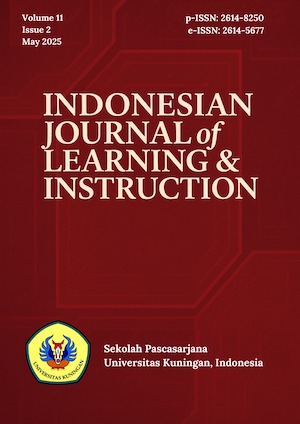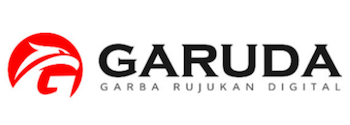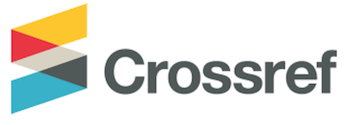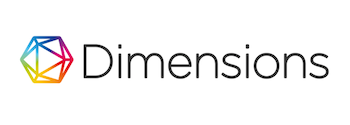PRE-SERVICE EFL TEACHERS’ CREATIVE THINKING
Abstract
This study aims to investigate the pre-service teachers’ creative thinking at the faculty of Teacher Training and Education, Universitas Kristen Indonesia. It is limited to the difference of creative thinking between the male and female students. It was conducted at the Christian University of Indonesia within a period of 3 months from February to May 2021. The research design used was ex-post facto. The research subjects are 36 semester students who were selected purposively. The research instrument used is a standardized essay test. The data taken trough test were analyzed using descriptively, besides using a descriptive quantative, the data of the research were also analyzed using independent t test trough SPSS. The results of this study shows that the faculty of teacher training and education students’ creative thinking skills is at the level of “good” category, which is 63.69%. From a further analysis, it is found that the comparison between male and female students’ creative thinking skills did not have a significant difference. Thus, it can be concluded that male students creative thinking ability are much the same with the female students’ creative thinking ability at the Faculty of Teacher Training and Education, Universitas Kristen Indonesia.
Keywords: creative thinking; teaching English; male and female.
References
Adamczyk, S., Bullinger, A. C., & Möslein, K. M. (2012). Innovation contests: A review, classification and outlook. Creativity and Innovation Management, 21(4), 335-360.
Azevedo, I., de Fátima Morais, M., & Martins, F. (2019). The future problem solving program international: An intervention to promote creative skills in Portuguese adolescents. The Journal of Creative Behavior, 53(3), 263-273.
Barbot, B., Besançon, M., & I Lubart, T. (2011). Assessing creativity in the classroom. The Open Education Journal, 4(1).
Bart, W. M., Hokanson, B., Sahin, I., & Abdelsamea, M. A. (2015). An investigation of the gender differences in creative thinking abilities among 8th and 11th grade students. Thinking Skills and Creativity, 17, 17-24.
Batlolona, J. R., Diantoro, M., & Latifah, E. (2019). Creative thinking skills students in physics on solid material elasticity. Journal of Turkish Science Education, 16(1), 48-61.
Bell, J., & Waters, S. (2018). Ebook: doing your research project: a guide for first-time researchers. McGraw-hill education (UK).
Berestova, A., Ermakov, D., Aitbayeva, A., Gromov, E., & Vanina, E. (2021). Social networks to improve the creative thinking of students: How does it works?. Thinking Skills and Creativity, 41, 100912.
Binkley, M., Erstad, O., Herman, J., Raizen, S., Ripley, M., Miller-Ricci, M., & Rumble, M. (2012). Defining twenty-first century skills. In Assessment and teaching of 21st century skills (pp. 17-66). Springer, Dordrecht.
Bloom, L. A., & Doss, K. (2021). Using technology to foster creative and critical thinking in the classroom. In Research anthology on developing critical thinking skills in students (pp. 553-567). IGI Global.
Brookfield, S. D. (2022). Teaching for critical thinking. Handbook of research on educational leadership and research methodology, 311-327.
Brookhart, S. M. (2010). How to assess higher-order thinking skills in your classroom. ASCD.
Çakici, D. (2018). Metacognitive awareness and critical thinking abilities of pre-service EFL teachers. Journal of Education and Learning, 7(5), 116-129.
Chang, Y., Li, B. D., Chen, H. C., & Chiu, F. C. (2015). Investigating the synergy of critical thinking and creative thinking in the course of integrated activity in Taiwan. Educational Psychology, 35(3), 341-360.
Clemente, V., Vieira, R., & Tschimmel, K. (2016, October). A learning toolkit to promote creative and critical thinking in product design and development through Design Thinking. In 2016 2nd International Conference of the Portuguese Society for Engineering Education (CISPEE) (pp. 1-6). IEEE.
Cohen, M. R. (2018). Reason and nature: An essay on the meaning of scientific method. Routledge.
Conklin, W. (2011). Higher-order thinking skills to develop 21st century learners. Teacher Created Materials.
Da Costa, S., Páez, D., Sánchez, F., Garaigordobil, M., & Gondim, S. (2015). Personal factors of creativity: A second order meta-analysis. Revista de Psicología del Trabajo y de las Organizaciones, 31(3), 165-173.
Drapeau, P. (2014). Sparking student creativity: Practical ways to promote innovative thinking and problem solving. ASCD.
Dziedziewicz, D., Oledzka, D., & Karwowski, M. (2013). Developing 4-to 6-year-old children's figural creativity using a doodle-book program. Thinking Skills and Creativity, 9, 85-95.
Ellis, J., Fosdick, B. K., & Rasmussen, C. (2016). Women 1.5 times more likely to leave STEM pipeline after calculus compared to men: Lack of mathematical confidence a potential culprit. PloS one, 11(7), e0157447.
Eragamreddy, N. (2013). Teaching creative thinking skills. International Journal of English Language & Translation Studies, 1(2), 124-145.
Fakhretdinova, G., Dulalaeva, L., & Suntsova, M. (2020, April). Integrating soft skills into English language teaching in Englineering education. In 2020 IEEE Global Engineering Education Conference (EDUCON) (pp. 1352-1356). IEEE.
Fisher, R. (2018). Thinking skills. In Learning to teach in the primary school (pp. 443-455). Routledge.
Florea, N. M., & Hurjui, E. (2015). Critical thinking in elementary school children. Procedia-Social and Behavioral Sciences, 180, 565-572.
Ghonsooly, B., & Showqi, S. (2012). The effects of foreign language learning on creativity. English Language Teaching, 5(4), 161-167.
Haig, B. D. (2018). An abductive theory of scientific method. In Method matters in psychology (pp. 35-64). Springer, Cham.
Harris, A., & de Bruin, L. R. (2018). Training teachers for twenty-first century creative and critical thinking: Australian implications from an international study. Teaching Education, 29(3), 234-250.
He, W. J. (2018). A 4-year longitudinal study of the sex-creativity relationship in childhood, adolescence, and emerging adulthood: Findings of mean and variability analyses. Frontiers in Psychology, 9, 2331.
He, W. J., & Wong, W. C. (2021). Gender differences in creative self-efficacy: Findings of mean and variability analyses. Thinking Skills and Creativity, 42, 100955.
Hill, J. D., & Miller, K. B. (2013). Classroom instruction that works with English language learners. ASCD.
Hong, E., & Milgram, R. M. (2010). Creative thinking ability: Domain generality and specificity. Creativity Research Journal, 22(3), 272-287.
Irvine, J., Telford, W., Anusic, V., & Alves, P. (2016). A straightforward model eliciting activity and the power of “What If?” in supporting students’ higher-order thinking. Betty Jones & Sisters Publishing, 3, 7-22.
Karataş, T. Ö., & Tuncer, H. (2020). Sustaining language skills development of pre-service EFL teachers despite the COVID-19 interruption: A case of emergency distance education. Sustainability, 12(19), 8188.
Kivunja, C. (2014). Do you want your students to be job-ready with 21st century skills? Change pedagogies: A pedagogical paradigm shift from Vygotskyian social constructivism to critical thinking, problem solving and siemens' digital connectivism. International journal of higher education, 3(3), 81-91.
Kouhdasht, R. N., Mahdian, M. J., & Naeini, M. A. (2013). The relationship between emotional intelligence and thinking styles in male and female students in Tehran, Iran. International Journal of Learning and Development, 3(3), 110-119.
Lai, E. R. (2011). Critical thinking: A literature review. Pearson's Research Reports, 6(1), 40-41.
Leggett, N. (2017). Early childhood creativity: Challenging educators in their role to intentionally develop creative thinking in children. Early Childhood Education Journal, 45(6), 845-853.
Li, L. (2016). Thinking skills and creativity in second language education: Where are we now?. Thinking Skills and Creativity, 22, 267-272.
Lin, C. S., & Wu, R. Y. W. (2016). Effects of web-based creative thinking teaching on students’ creativity and learning outcome. Eurasia Journal of Mathematics, Science and Technology Education, 12(6), 1675-1684.
Lucas, B., & Spencer, E. (2017). Teaching creative thinking: Developing learners who generate ideas and can think critically (Pedagogy for a Changing World series). Crown House Publishing Ltd.
Madsen, S. R. (2015). Why do we need more women leaders in higher education?. HERS Research Brief, 1, 1-9.
Mierdel, J., & Bogner, F. X. (2019). Is creativity, hands-on modeling and cognitive learning gender-dependent?. Thinking Skills and Creativity, 31, 91-102.
Naibaho, L. (2022). The integration of mind mapping strategy on students’ essay writing at universities kristen Indonesia. JPPI (Jurnal Penelitian Pendidikan Indonesia), 8(2), 320-328.
Naibaho, L. (2022). The pre-service teachers’communication ability analysis at teacher training and education faculty. Indonesian EFL Journal, 8(2), 237-246.
Özgelen, S. (2012). Students’ science process skills within a cognitive domain framework. Eurasia Journal of Mathematics, Science and Technology Education, 8(4), 283-292.
Özcan, D. (2010). Contributions of English teachers’ behaviours on students’ creative thinking abilities. Procedia-Social and Behavioral Sciences, 2(2), 5850-5854.
Phuong, Y. H., & Nguyen, T. T. (2019). Students' perceptions towards the benefits and drawbacks of EMI classes. English Language Teaching, 12(5), 88-100.
Proctor, T. (2010). Creative problem solving for managers: developing skills for decision making and innovation. Routledge.
Rivers, W. M. (2018). Teaching foreign language skills. University of Chicago Press.
Rizvi, S. L., Finkelstein, J., Wacha-Montes, A., Yeager, A. L., Ruork, A. K., Yin, Q., Kellerman, J., Kim, J. S., Stern, M., Oshin, L. A., & Kleiman, E. M. (2022). Randomized clinical trial of a brief, scalable intervention for mental health sequelae in college students during the COVID-19 pandemic. Behaviour research and Therapy, 149, 104015.
Robertson, J. (2013). The influence of a game-making project on male and female learners’ attitudes to computing. Computer Science Education, 23(1), 58-83.
Sale, J. E., & Thielke, S. (2018). Qualitative research is a fundamental scientific process. Journal of Clinical Epidemiology, 102, 129-133.
Secora, K., & Emmorey, K. (2019). Social abilities and visual-spatial perspective-taking skill: Deaf signers and hearing nonsigners. The Journal of Deaf Studies and Deaf Education, 24(3), 201-213.
Senel, M., & Bagçeci, B. (2019). Development of creative thinking skills of students through journal writing. International Journal of Progressive Education, 15(5), 216-237.
Serevina, V., Andriana, W., & Fernandianto, A. (2018). Improving creative thinking ability of class X students Public High School 59 Jakarta through guided inquiry learning model. American Journal of Educational Research, 6(12), 1593-1599.
Singh, R. K., Singh, C. K., Tunku, M. T. M., Mostafa, N. A., & Singh, T. S. (2018). A review of research on the use of higher order thinking skills to teach writing. International Journal of English Linguistics, 8(1), 86-93.
Stoet, G., Bailey, D. H., Moore, A. M., & Geary, D. C. (2016). Countries with higher levels of gender equality show larger national sex differences in mathematics anxiety and relatively lower parental mathematics valuation for girls. PloS one, 11(4), e0153857.
Stroh, D. P. (2015). Systems thinking for social change: A practical guide to solving complex problems, avoiding unintended consequences, and achieving lasting results. Chelsea Green Publishing.
Tang, L. (2016). Exploration on cultivation of critical thinking in college intensive reading course. English Language Teaching, 9(3), 18-23.
Tous, M. D., & Haghighi, S. (2016). Developing critical thinking with debate: Evidence from Iranian male and female students. Informal Logic, 36(1), 64-82.
Tran, T. B. L., Ho, T. N., Mackenzie, S. V., & Le, L. K. (2017). Developing assessment criteria of a lesson for creativity to promote teaching for creativity. Thinking Skills and Creativity, 25, 10-26.
Turkmen, H., & Sertkahya, M. (2015). Creative thinking skills analyzes of vocational high school students. Journal of Educational and Instructional Studies in the World, 5(10), 74-84.
Tyas, E. H., & Naibaho, L. (2021). HOTS learning model improves the quality of education. International Journal of Research-Granthaalayah, 9(1), 176-182.
Ülger, K. (2016). The relationship between creative thinking and critical thinking skills of students. Hacettepe Universitesi Egitim Fakultesi Dergisi-Hacettepe University Journal of Education, 1-16.
Ülger, K., & Morsünbül, U. (2016). The differences in creative thinking: The comparison of male and female students. Journal of Counseling and Education, 5(4), 1-12.
van Dun, C., van Kraaij, A., Wegman, J., Kuipers, J., Aarts, E., & Janzen, G. (2021). Sex differences and the role of gaming experience in spatial cognition performance in primary school children: An exploratory study. Brain Sciences, 11(7), 886.
Yang, X., Chung, K. K. H., & McBride, C. (2019). Longitudinal contributions of executive functioning and visual-spatial skills to mathematics learning in young Chinese children. Educational Psychology, 39(5), 678-704.
Zhang, T., Chen, X., Hu, J., & Ketwan, P. (2021). EFL students' preferences for written corrective feedback: do error types, language proficiency, and foreign language enjoyment matter?. Frontiers in Psychology, 12, 660564.
Zhao, H., Narikbayeva, L., & Wu, Y. (2021). Critical thinking of music educators as a factor in creative music pedagogy. Thinking Skills and Creativity, 41, 100884.









